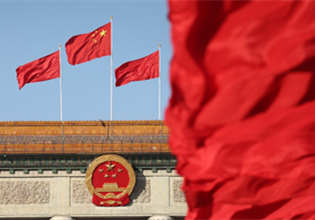Manzhouli's opening-up efforts starting to bear fruit
Li Zheng was just a local fruit-stall owner in the Inner Mongolia autonomous region nearly a decade ago.
Today, the 41-year-old owns a business selling 50,000 metric tons of fruit and vegetables annually, around one-tenth of the total fresh-food exports of his home town Manzhouli, in the region of Hulunbuir which borders Mongolia to the west and Russia to the north.
His dramatic expansion of Yikeli Fruit Trade Co into one of the largest trading companies in the area started in 2006 as Manzhouli was chosen as a national pilot city to boost trade with these two bordering countries.
"We now operate seven large fruit and vegetable wholesale markets in Russia," he said.
"I never thought that I could have owned such a large company by myself."
Li was one of hundreds of small business owners in Manzhouli - the largest land port of entry in China - to have benefited from the opening-up plan.
Between 2011 and 2014, the city's accumulated trade volume hit nearly 300 million tons, and it now accounts for about 70 percent of land trade between China and Russia.
Efforts to expand trade with Russia by the local authorities in that time have also included a specially dedicated highway, opened in 2012, which reduced the previous one-hour border crossing to less than 20 minutes for traders.
Other work has been involved in building and improving infrastructure and logistics services in Manzhouli.
In 2012, Li also set up a separate logistics business, which handles transportation, warehousing, urban delivery and e-commerce.
It now plans to build a 516 million yuan ($81 million), 410,000 square meters international logistics center in Manzhouli to expand its operations.
"After the whole plant is put into operation, the handling capacity of the logistics center will hit 2 million tons, the largest in the region," he said.
Manzhouli itself has seen huge expansion across various sectors as a result of the scheme, most notably in wood processing, chemical construction materials, mechanical assembly and tourism.
Over the next decade, officials hope to firmly establish the city with a population of 300,000 as Northeast Asia's premier international trading hub, as well as a tourist attraction, processing and manufacturing base, and a center for science and technology innovation.
The plans, Li said, have deepened China-Russia ties, too.
"It's a golden opportunity for many people," he said. "And I certainly hope to grasp a lot more business in the future as a result."



 Print
Print Mail
Mail





